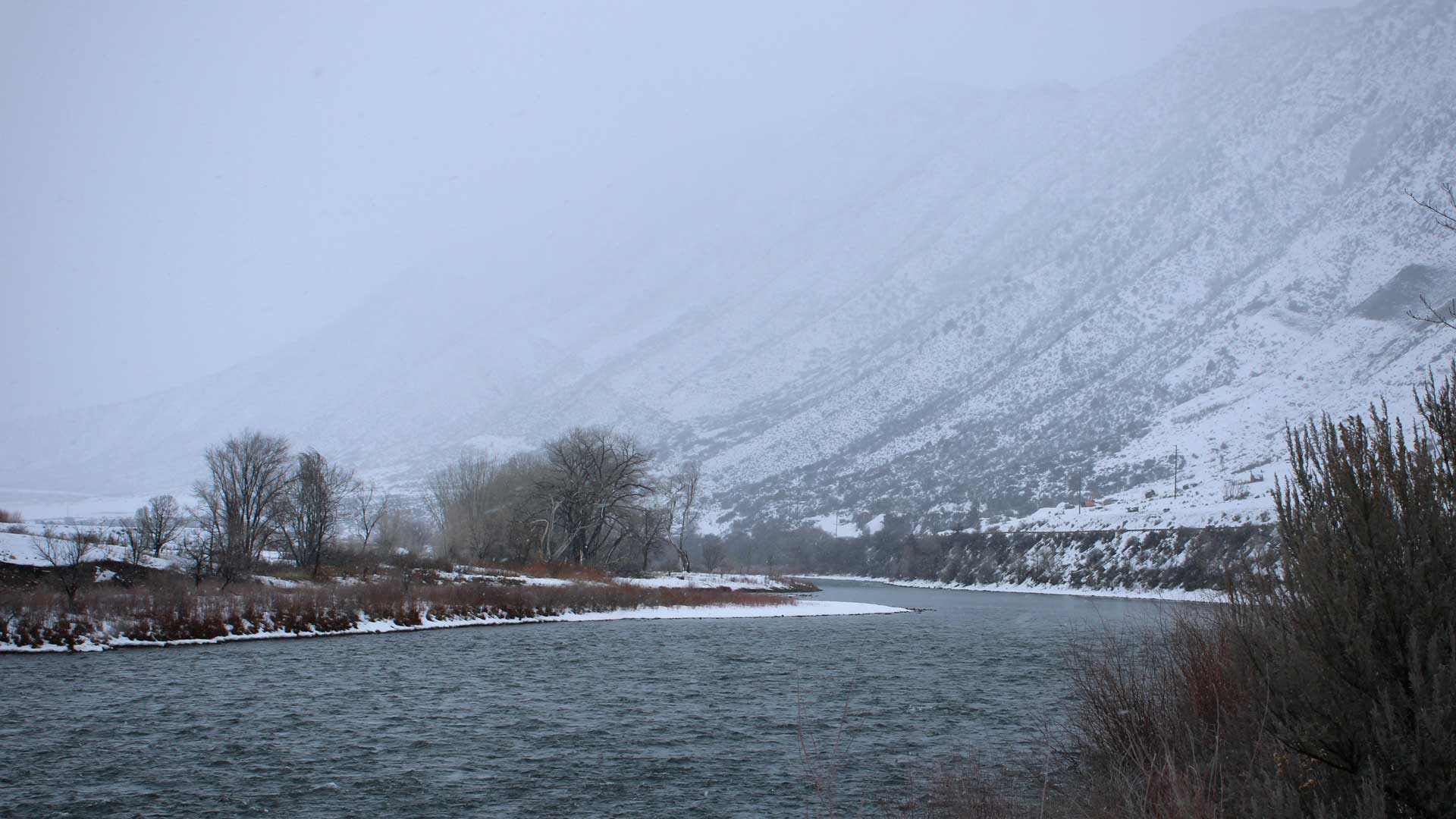 Snow falls on the Colorado River near New Castle, Colorado, on January 11, 2023. Months of snow and rain soaked a region in the grips of drought and helped replenish reservoirs along the Colorado River.
Snow falls on the Colorado River near New Castle, Colorado, on January 11, 2023. Months of snow and rain soaked a region in the grips of drought and helped replenish reservoirs along the Colorado River.
A stretch of unusually wet months has erased drought across much of the Southwest. A briefing by climate experts spelled out how a snowy winter and rainy spring brought relief to a particularly parched region.
“Unlike some past presentations I’ve given for the Southwest,” said Brian Fuchs, a climatologist with the National Drought Mitigation Center, “This one actually has some good news in it.”
In June 2022, 99% of the Southwest was under some degree of drought. Just a year later, only 28% of the region is experiencing drought. The U.S. Drought Monitor defines the Southwest as Colorado, Utah, New Mexico, Arizona, California, and Nevada.
Parts of those states saw record-setting snowpack this winter, keeping ski resorts open late into the spring and providing a big dose of relief for water managers grappling with a shrinking supply of drinking water from the Colorado River. Precipitation continued into the warmer months as well.


Even in places where drought conditions persist, they are less severe than a year ago. Last June, 72% of the Southwest was under “extreme drought” or “exceptional drought,” the two most severe categories. Now, 0% of the region is experiencing those high levels of drought, with the majority of drought-stricken areas classified under the least severe category.
“What’s really safe to say is, throughout the entire West, we’ve seen a dramatic decrease in the amount of drought,” Fuchs said. “And that can be coupled back to what we saw through the fall and winter months, and even the spring throughout the region.”
The snowy winter was a boon to the Colorado River, which gets nearly two-thirds of its water from the state of Colorado. The remainder mostly comes from high-elevation parts of Utah and Wyoming. The snowy boost bought water managers enough time to agree on a temporary water conservation deal that should last for the next three years.
The Colorado River, which supplies tens of millions of people and a multi-billion dollar agricultural industry from Wyoming to Mexico, is shrinking at the hands of climate change. Scientists say the term “drought” may no longer be appropriate for the region, and often refer to the Southwest’s steady drying as “aridification.” That term describes a permanent reset of the baseline amount of water the region should expect each year.
In the months ahead, Fuchs expects conditions to lean warmer and drier than normal, especially in Arizona and New Mexico. He added that the area is typically warm and dry until the North American Monsoon picks up later in the summer. The monsoon is a weather pattern that typically peaks in July and August, bringing rainstorms to the Southwest.
While the region’s water supply is mostly fueled by snow, climatologists say summertime moisture provides a boost for farmers and ranchers and helps reduce the likelihood of wildfire.
This story is part of ongoing coverage of the Colorado River, produced and distributed by KUNC and supported by the Walton Family Foundation.

By submitting your comments, you hereby give AZPM the right to post your comments and potentially use them in any other form of media operated by this institution.